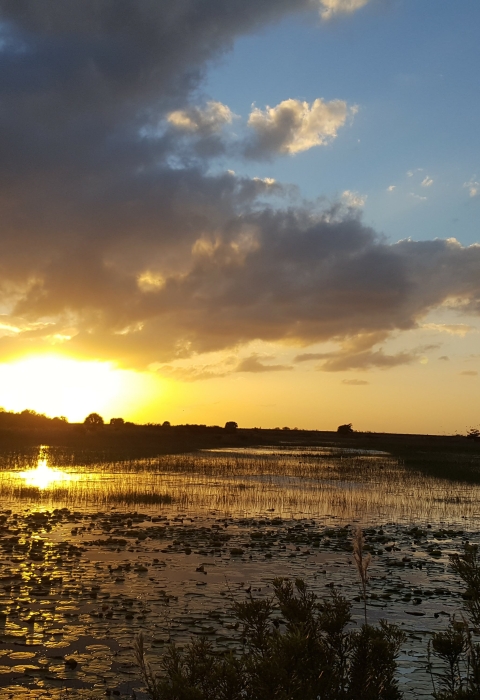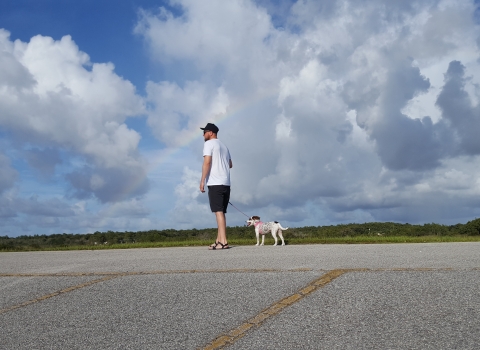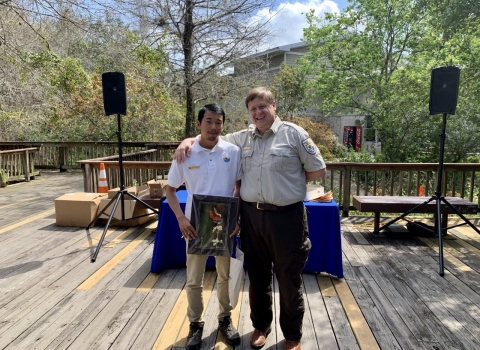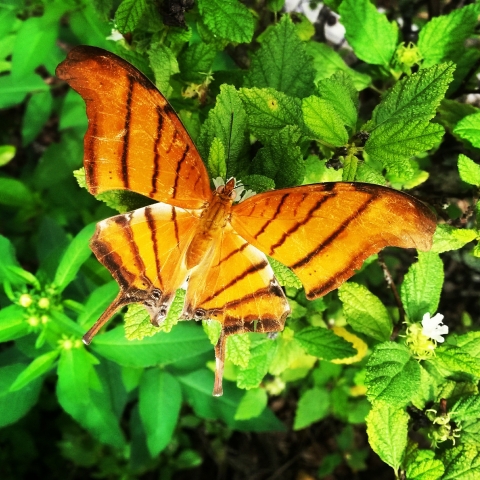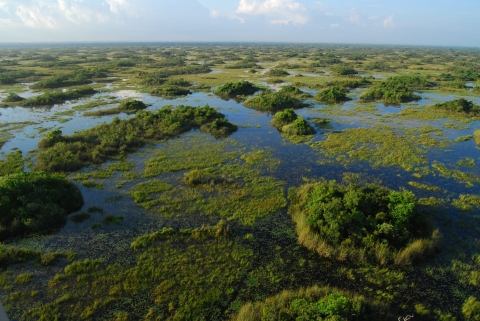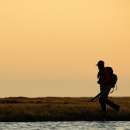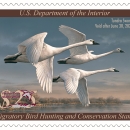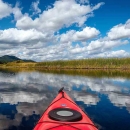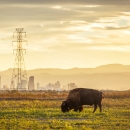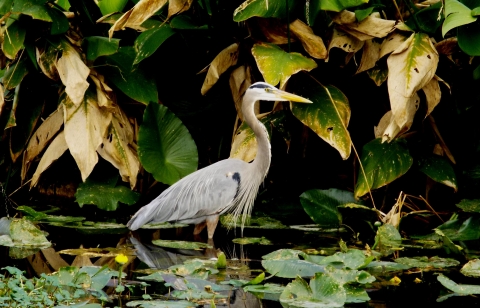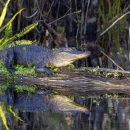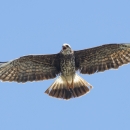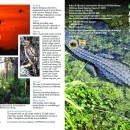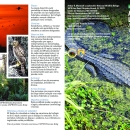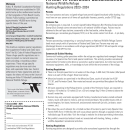Visit Us
Welcome! Visitors to Arthur R. Marshall Loxahatchee National Wildlife Refuge can experience the Florida Everglades just miles from the busy noise and traffic of city life.
Our visitor center is open daily from 9:00 am to 4:00 pm. Stop by the front desk to learn about recent wildlife sightings, view our calendar of events, and learn about opportunities for hiking, biking, boating, canoeing, hunting, fishing, wildlife photography, birding, watching wildlife, and more. A visit to the refuge is a fantastic way to explore the great outdoors and reconnect with nature!
Entrance Fee: $10/daily or $25/annually per vehicle. A variety of passes can be purchased in-person at the visitor center, seasonally at fee booths, or you can buy your pass online through Recreation.gov. Learn more about entrance fees and passes on the Visit Us page.
Check out our Learning at Lox videos on YouTube!
Location and Contact Information
About Us
Arthur R. Marshall Loxahatchee National Wildlife Refuge was established in 1951 and is located in Palm Beach County, Florida.
The refuge protects 145,188 acres, or 226 square miles, of Everglades ecosystems including a mosaic of wet prairies, sawgrass ridges, sloughs, tree islands, cattail communities, and a 400-acre cypress swamp. These lands and waters provide habitat for more than 250 species of birds, 60 species of reptiles and amphibians, 40 species of butterflies, and 20 types of mammals.
Tours
Guided walks and interpretive tours are offered throughout the year by staff and volunteer naturalists.
What We Do
Wildlife conservation is at the heart of the National Wildlife Refuge System. It drives everything on U.S. Fish and Wildlife Service lands and waters managed within the Refuge System, from the purposes for which a national wildlife refuge national wildlife refuge
A national wildlife refuge is typically a contiguous area of land and water managed by the U.S. Fish and Wildlife Service for the conservation and, where appropriate, restoration of fish, wildlife and plant resources and their habitats for the benefit of present and future generations of Americans.
Learn more about national wildlife refuge is established to the recreational activities offered to the resource management tools used. Using conservation best practices, the Refuge System manages Service lands and waters to help ensure the survival of native wildlife species.
Our Organization
Our Species
More than 250 species of birds, 60 species of reptiles and amphibians, 40 species of butterflies, and 20 types of mammals are found on the refuge. Visitors frequently see alligators, bobcats, white-tailed deer, and a variety of bird-life including sandhill cranes, pileated woodpeckers, herons, egrets, wood storks and the federally endangered snail kite.
Check out recent birds sightings on eBird and wildlife sightings on iNaturalist.
Get Involved
Volunteer Opportunities
Discover for yourself what tens of thousands of volunteers across the U.S. have learned: Volunteering at a national wildlife refuge national wildlife refuge
A national wildlife refuge is typically a contiguous area of land and water managed by the U.S. Fish and Wildlife Service for the conservation and, where appropriate, restoration of fish, wildlife and plant resources and their habitats for the benefit of present and future generations of Americans.
Learn more about national wildlife refuge is fun and rewarding in many ways. Master new skills. Meet new friends. Enjoy a sense of accomplishment from doing your part to further wildlife conservation for the pleasure of generations to follow.
Projects and Research
Learn about our projects and research, including Burmese python management in South Florida.
